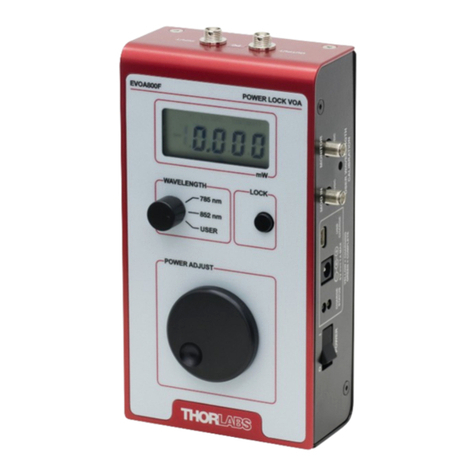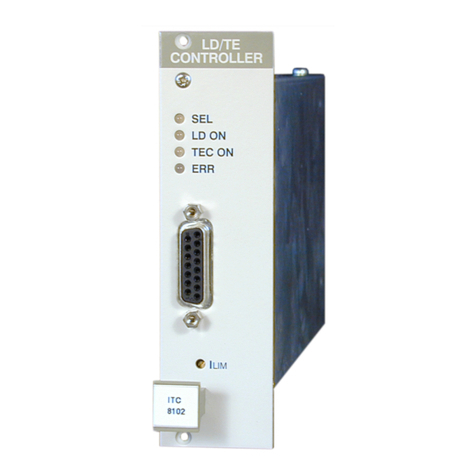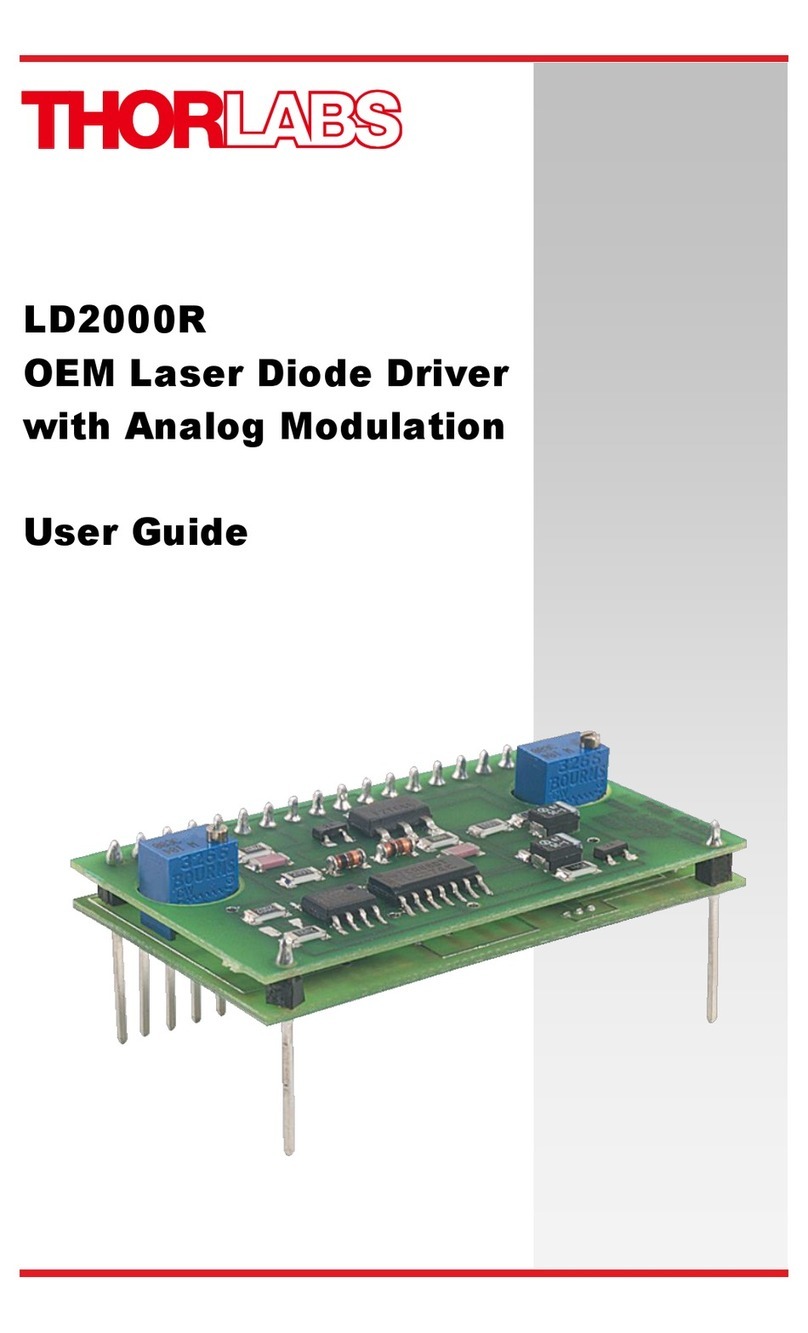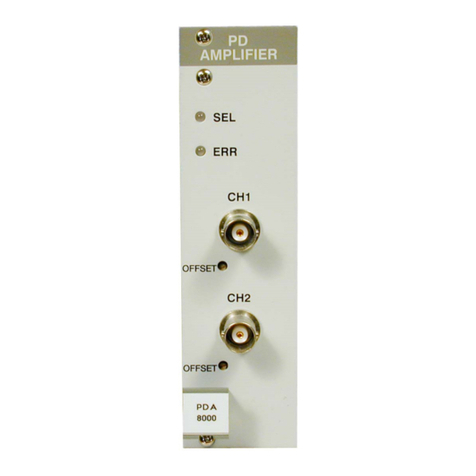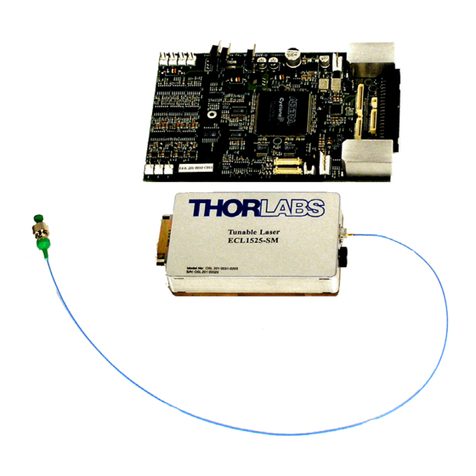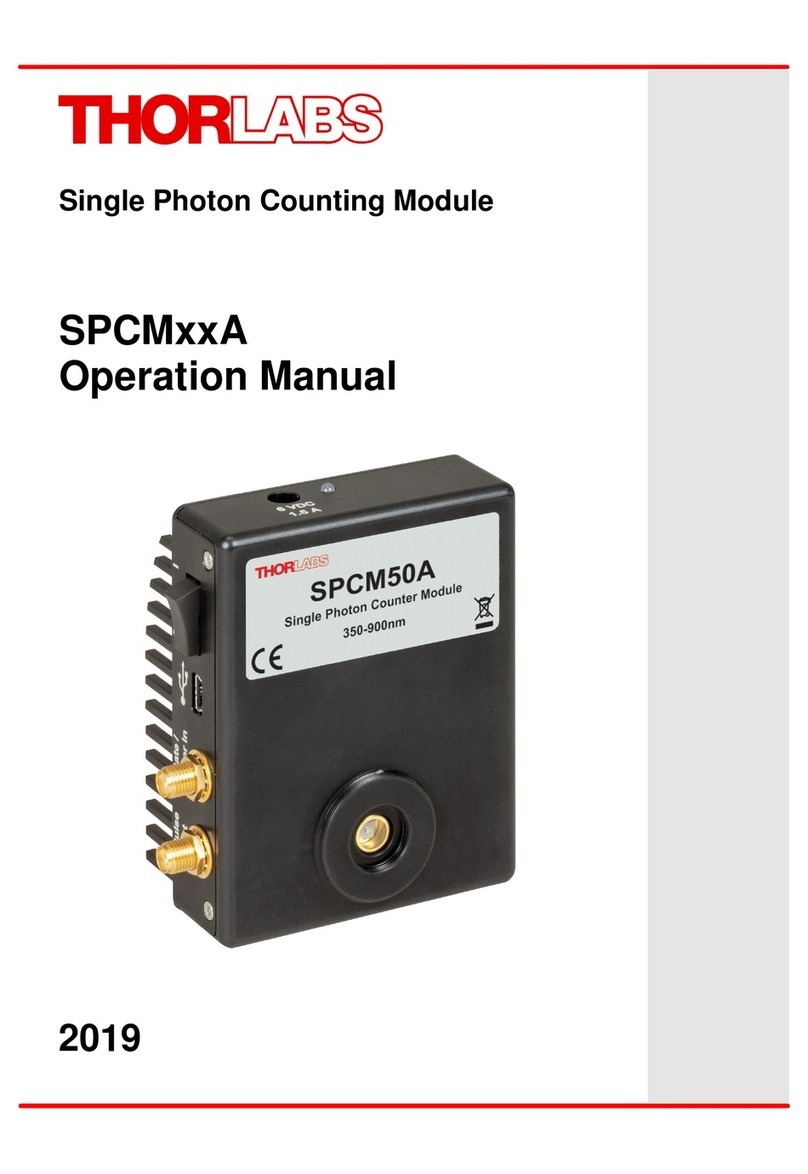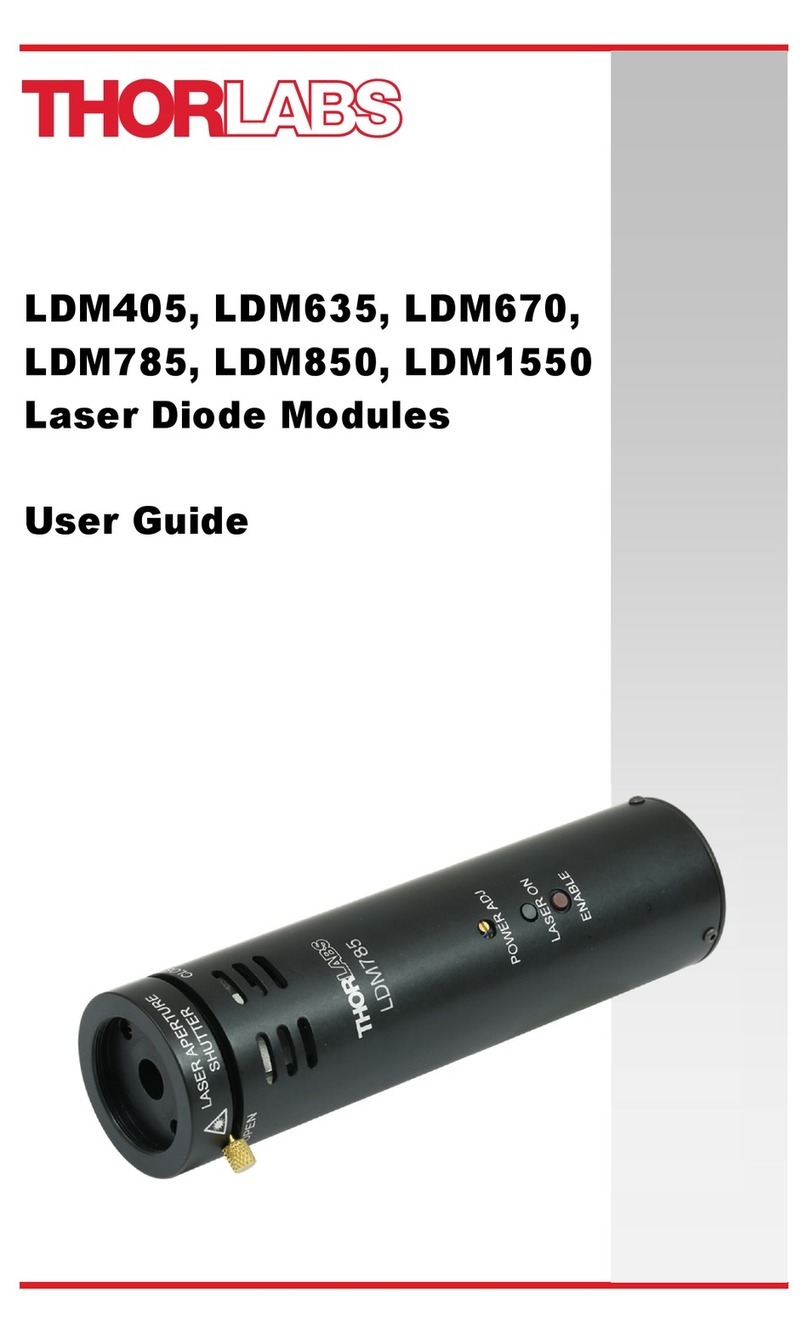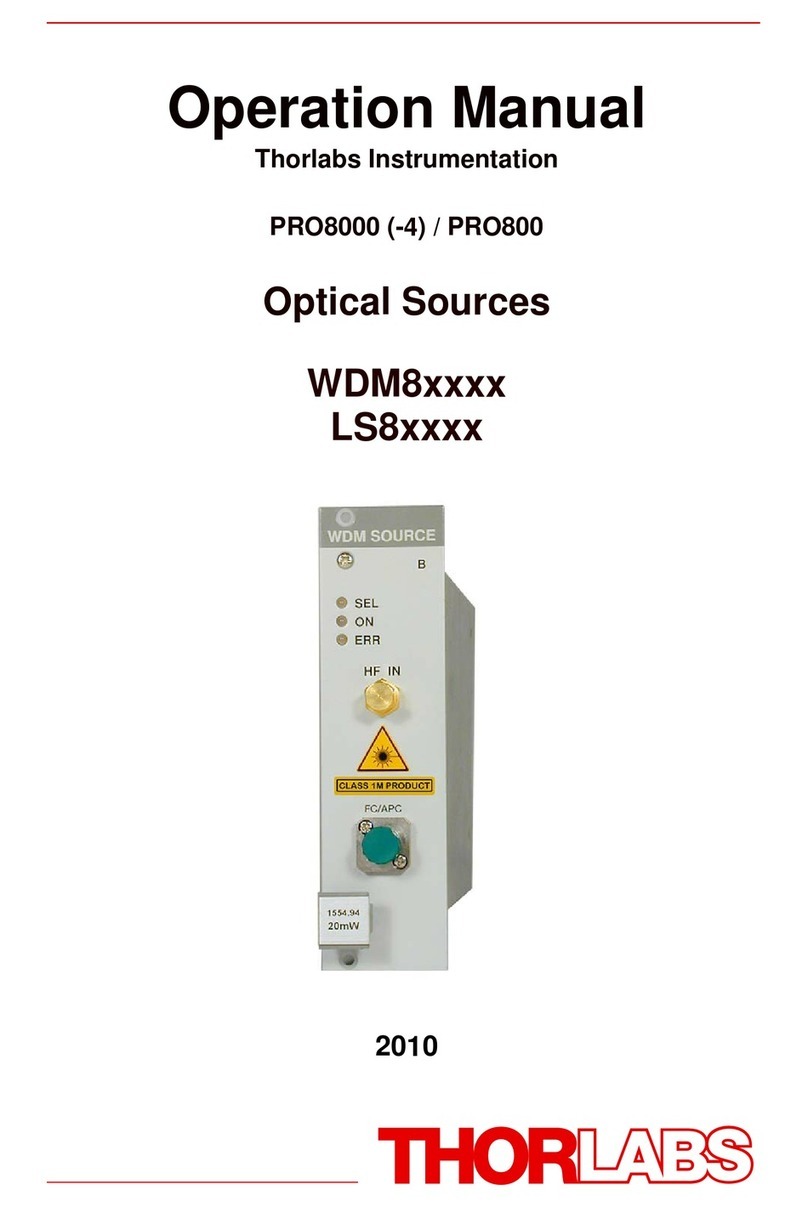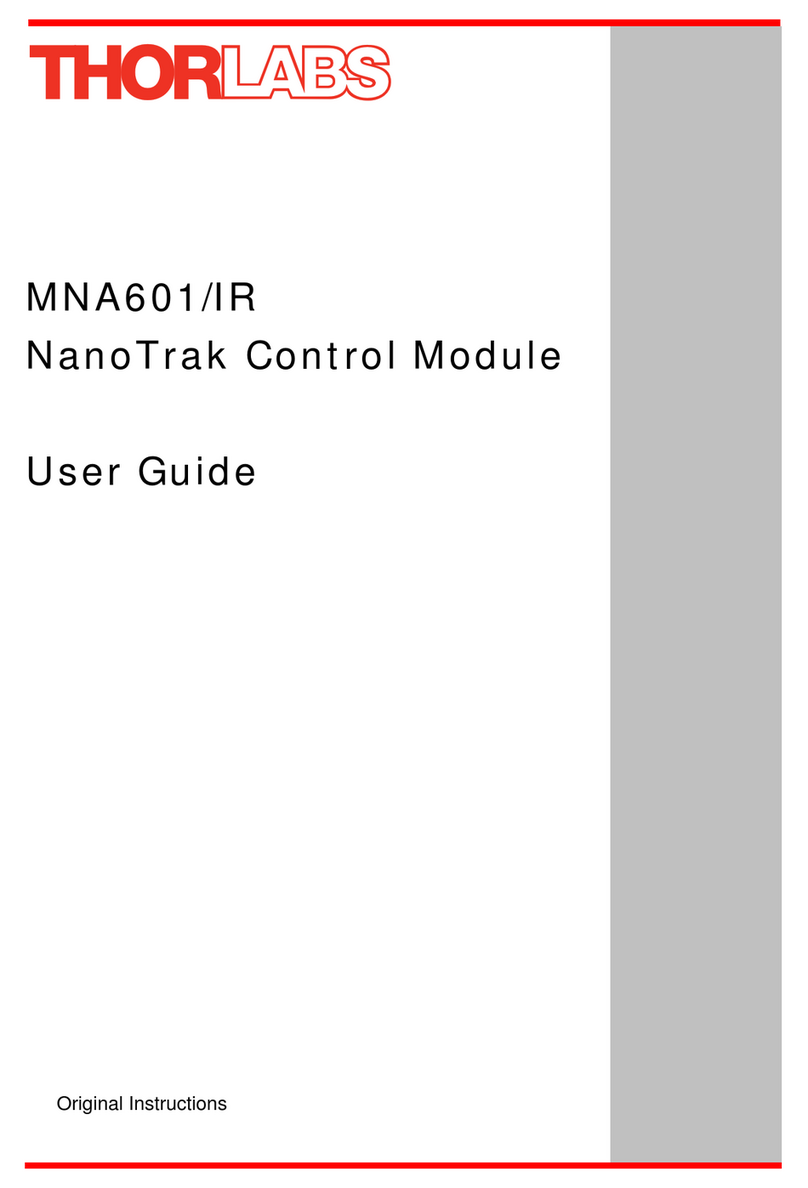
© 2016 Thorlabs4
TED8000
1 General Information
The TED8000 Modules are Temperature Controllers that are capable to control TEC elements
(Peltiers) inorder to maintaina constant temperature of e.g. laser diodes
For the PRO8000 mainframe series Thorlabs supplies LabVIEW®- and LabWindows/CVI®-drivers
for Windows 32 bit.
Please refer to http://www.thorlabs.com for latest driver updates.
1.1 Safety
Attention
All statements regarding safety of operation and technical data in this instruction manual will only
applywhenthe unit is operated correctlyas it was designed for.
Prior to applying power to the TED8000, make sure that the protective conductor of the mains
power cord is correctly connected to the protective earth ground contact of the socket outlet!
Improper grounding cancause electric shock resulting indamage to your healthor evendeath!
Also make sure that your line voltage agrees withthe voltage givenonthe letterplate of the unit and
that the right fuse has beeninserted!
Modules of the TED8000 Series are allowed to be operated only a mainframe of the PRO8000
series.
To avoid damage to the modules used or to the mainframe, modules must not be installed or
removed whenthe mainframe is switched on.
Allmodules mustbe fixed using the screws provided for this purpose.
The TED8000 must not be operated inexplosionendangered environments!
Do not remove covers! Do not obstruct the air ventilationslots inthe housing!
Refer servicing to qualified personnel!
Only with written consent from Thorlabs may changes to single components be made or
components not supplied byThorlabs be used.
This precision device is onlyserviceable if properlypacked into the complete original packaging. If
necessary, ask for a replacementpackage prior to return.
Allconnections to the load must be made using shielded cables,unless otherwise stated.
Semiconductor lasers can deliver up to several 100mW of possibly invisible laser radiation!
Improper operation cancause severe eye and healthdamage!
Paystrict attentionto the safetyrecommendations of the appropriate laser safetyclass!
Attention
The following statement applies to the products covered in this manual, unless otherwise specified
herein. The statement for other products will appear inthe accompanying documentation.
This equipment has been tested and found to comply with the limits for a Class Adigital device,
pursuantto part15 of the FCC Rules. These limits are designed to provide reasonable protection
against harmful interference when the equipment is operated in a commercial environment. This
equipment generates, uses, and can radiate radio frequency energy and, if not installed and used
in accordance with the instruction manual, may cause harmful interference to radio
communications. Operation of this equipment in a residential area is likely to cause harmful
interference inwhichcase the user will be required to correct the interference at his ownexpense.
Thorlabs is not responsible for any radio television interference caused by modifications of this
equipment or the substitution or attachment of connecting cables and equipment other than those
